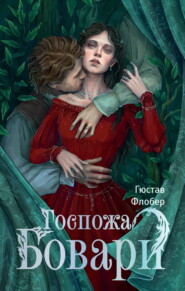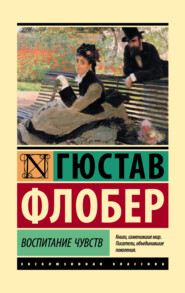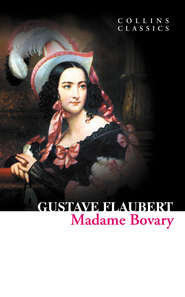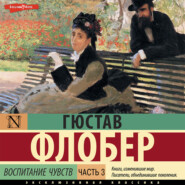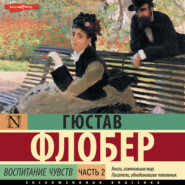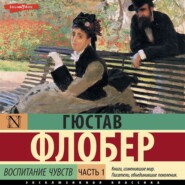По всем вопросам обращайтесь на: info@litportal.ru
(©) 2003-2024.
✖
Over Strand and Field: A Record of Travel through Brittany
Настройки чтения
Размер шрифта
Высота строк
Поля
Nothing, nothing! The open sky, the growing grass, the passing wind. No ragged child tending a browsing cow; not even, as elsewhere, some solitary goat sticking its shaggy head through an aperture in the walls to turn at our approach and flee in terror through the bushes; not a song-bird, not a nest, not a sound! This castle is like a ghost: mute and cold, it stands abandoned in this deserted place, and looks accursed and replete with terrifying recollections. Still, this melancholy dwelling, which the owls now seem to avoid, was once inhabited. In the dungeon, between four walls as livid as the bottom of an old drinking-trough, we were able to discover the traces of five floors. A chimney, with its two round pillars and black top, has remained suspended in the air at a height of thirty feet. Earth has accumulated on it, and plants are growing there as if it were a jardinière.
Beyond the second enclosure, in a ploughed field, one can recognise the ruins of a chapel by the broken shafts of an ogive portal. Grass has grown around it, and trees have replaced the columns. Four hundred years ago, this chapel was filled with ornaments of gold cloth and silk, censers, chandeliers, chalices, crosses, precious stones, gold vessels and vases, a choir of thirty singers, chaplains, musicians, and children sang hymns to the accompaniment of an organ which they took along with them when they travelled. They were clad in scarlet garments lined with pearl grey and vair. There was one whom they called archdeacon, and another whom they called bishop, and the Pope was asked to allow them to wear mitres like canons, for this chapel was the chapel, and this castle one of the castles of Gilles de Laval, lord of Rouci, of Montmorency, of Retz and of Craon, lieutenant-general of the Duke of Brittany and field-marshal of France, who was burned at Nantes on the 25th of October, 1440, in the Prée de la Madéleine for being a counterfeiter, a murderer, a magician, an atheist and a Sodomite.
He possessed more than one hundred thousand crowns' worth of furniture; an income of thirty thousand pounds a year, the profits of his fiefs and his salary as field-marshal; fifty magnificently appointed horsemen escorted him. He kept open house, served the rarest viands and the oldest wines at his board, and gave representations of mysteries, as cities used to do when a king was within their gates. When his money gave out, he sold his estates; when those were gone, he looked around for more gold, and when he had destroyed his furnaces, he called on the devil. He wrote him that he would give him all that he possessed, excepting his life and his soul. He made sacrifices, gave alms and instituted ceremonies in his honour. At night, the bleak walls of the castle lighted up by the glare of the torches that flared amid bumpers of rare wines and gipsy jugglers, and blushed hotly under the unceasing breath of magical bellows. The inhabitants invoked the devil, joked with death, murdered children, enjoyed frightful and atrocious pleasures; blood flowed, instruments played, everything echoed with voluptuousness, horror, and madness.
When he expired, four or five damsels had his body removed from the stake, laid out, and taken to the Carmelites, who, after performing the customary services, buried him in state.
On one of the bridges of the Loire, relates Guépin, opposite the Hôtel de la Boule-d'Or, an expiatory monument was erected to his memory. It was a niche containing the statue of the Bonne Vierge de crée lait, who had the power of creating milk in nurses; the good people offered her butter and similar rustic products. The niche still exists, but the statue is gone; the same as at the town-house, where the casket which contained the heart of Queen Anne is also empty. But we did not care to see the casket; we did not even give it a thought. I should have preferred gazing upon the trousers of the marshal of Retz to looking at the heart of Madame Anne de Bretagne.
CHAPTER III.
CARNAC
The field of Carnac is a large, open space where eleven rows of black stones are aligned at symmetrical intervals. They diminish in size as they recede from the ocean. Cambry asserts that there were four thousand of these rocks and Fréminville has counted twelve hundred of them. They are certainly very numerous.
What was their use? Was it a temple?
One day Saint Cornille, pursued along the shore by soldiers, was about to jump into the ocean, when he thought of changing them all into stone, and forthwith the men were petrified. But this explanation was good only for fools, little children, and poets. Other people looked for better reasons.
In the sixteenth century, Olaüs Magnus, archbishop of Upsal (who, banished to Rome, wrote a book on the antiquities of his country that met with widespread success except in his native land, Sweden, where it was not translated), discovered that, when these stones form one long, straight row, they cover the bodies of warriors who died while fighting duels; that those arranged in squares are consecrated to heroes that perished in battle; that those disposed in a circle are family graves, while those that form corners or angular figures are the tombs of horsemen or foot-soldiers, and more especially of those fighters whose party had triumphed. All this is quite clear, but Olaüs Magnus has forgotten to tell us how two cousins who killed each other in a duel on horseback could have been buried. The fact of the duel required that the stones be straight; the relationship required that they be circular; but as the men were horsemen, it seems as if the stones ought to have been arranged squarely, though this rule, it is true, was not formal, as it was applied only to those whose party had triumphed. O good Olaüs Magnus! You must have liked Monte-Pulciano exceeding well! And how many draughts of it did it take for you to acquire all this wonderful knowledge?
According to a certain English doctor named Borlase, who had observed similar stones in Cornouailles, "they buried soldiers there, in the very place where they died." As if, usually, they were carted to the cemetery! And he builds his hypothesis on the following comparison: their graves are on a straight line, like the front of an army on plains that were the scene of some great action.
Then they tried to bring in the Greeks, the Egyptians, and the Cochin Chinese! There is a Karnac in Egypt, they said, and one on the coast of Brittany. Now, it is probable that this Karnac descends from the Egyptian one; it is quite certain! In Egypt they are sphinxes; here they are rocks; but in both instances they are of stone. So it would seem that the Egyptians (who never travelled), came to this coast (of the existence of which they were ignorant), founded a colony (they never founded any), and left these crude statues (they produced such beautiful ones), as a positive proof of their sojourn in this country (which nobody mentions).
People fond of mythology thought them the columns of Hercules; people fond of natural history thought them a representation of the python, because, according to Pausanias, a similar heap of stones, on the road from Thebes to Elissonte, was called "the serpent's head," and especially because the rows of stones at Carnac present the sinuosities of a serpent. People fond of cosmography discovered a zodiac, like M. de Cambry, who recognised in those eleven rows of stones the twelve signs of the zodiac, "for it must be stated," he adds, "that the ancient Gauls had only eleven signs to the zodiac."
Subsequently, a member of the Institute conjectured that it might perhaps be the cemetery of the Venetians, who inhabited Vannes, situated six miles from Carnac, and who founded Venice, as everybody knows. Another man wrote that these Venetians, conquered by Cæsar, erected all those rocks solely in a spirit of humility and in order to honour their victor. But people were getting tired of the cemetery theory, the serpent and the zodiac; they set out again and this time found a Druidic temple.
The few documents that we possess, scattered through Pliny and Dionysius Cassius, agree in stating that the Druids chose dark places for their ceremonies, like the depths of the woods with "their vast silence." And as Carnac is situated on the coast, and surrounded by a barren country, where nothing but these gentlemen's fancies has ever grown, the first grenadier of France, but not, in my estimation, the cleverest man, followed by Pelloutier and by M. Mahé, (canon of the cathedral of Vannes), concluded that it was "a Druidic temple in which political meetings must also have been held."
But all had not been said, and it still remained to be discovered of what use the empty spaces in the rows could have been. "Let us look for the reason, a thing nobody has ever thought of before," cried M. Mahé, and, quoting a sentence from Pomponius Mela: "The Druids teach the nobility many things and instruct them secretly in caves and forests;" and this one from Tucain: "You dwell in tall forests," he reached the conclusion that the Druids not only officiated at the sanctuaries, but that they also lived and taught in them. "So the monument of Carnac being a sanctuary, like the Gallic forests," (O power of induction! where are you leading Father Mahé, canon of Vannes and correspondent of the Academy of Agriculture at Poitiers?), there is reason to believe that the intervals, which break up the rows of stones, held rows of houses where the Druids lived with their families and numerous pupils, and where the heads of the nation, who, on state days, betook themselves to the sanctuary, found comfortable lodgings. Good old Druids! Excellent ecclesiastics! How they have been calumnied! They lived there so righteously with their families and numerous pupils, and even were amiable enough to prepare lodgings for the principals of the nation!
But at last came a man imbued with the genius of ancient things and disdainful of trodden paths. He was able to recognize the rests of a Roman camp, and, strangely enough, the rests of one of the camps of Cæsar, who had had these stones upreared only to serve as support for the tents of his soldiers and prevent them from being blown away by the wind. What gales there must have been in those days, on the coasts of Armorica!
The honest writer who, to the glory of the great Julius, discovered this sublime precaution, (thus returning to Cæsar that which never belonged to Cæsar), was a former pupil of l'École Polytechnique, an engineer, a M. de la Sauvagère. The collection of all these data constitutes what is called Celtic Archæology, the mysteries of which we shall presently disclose.
A stone placed on another one is called a "dolmen," whether it be horizontal or perpendicular. A group of upright stones covered by succeeding flat stones, and forming a series of dolmens, is a "fairy grotto," a "fairy rock," a "devil's stable," or a "giant's palace"; for, like the people who serve the same wine under different labels, the Celto-maniacs, who had almost nothing to offer, decorated the same things with various names. When these stones form an ellipse, and have no head-covering, one must say: There is a "cromlech"; when one perceives a stone laid horizontally upon two upright stones, one is confronted by a "lichaven" or a "trilithe." Often two enormous rocks are put one on top of the other, and touch only at one point, and we read that "they are balanced in such a way that the wind alone is sufficient to make the upper rock sway perceptibly," an assertion which I do not dispute, although I am rather suspicious of the Celtic wind, and although these swaying rocks have always remained unshaken in spite of the fierce kicks I was artless enough to give them; they are called "rolling or rolled stones," "turned or transported stones," "stones that dance or dancing stones," "stones that twist or twisting stones." You must still learn what a pierre fichade, a pierre fiche, a pierre fixée are, and what is meant by a haute borne, a pierre latte and a pierre lait; in what a pierre fonte differs from a pierre fiette, and what connection there is between a chaire à diable and a pierre droite; then you will be as wise as ever were Pelloutier, Déric, Latour d'Auvergne, Penhoet and others, not forgetting Mahé and Fréminville. Now, all this means a pulvan, also called a men-hir, and designates nothing more than a stone of greater or lesser size, placed by itself in an open field.
I was about to forget the tumuli! Those that are composed of silica and soil are called "barrows" in high-flown language, while the simple heaps of stones are "gals-gals."
People have pretended that when they were not tombs the "dolmens" and "trilithes" were altars, that the "fairy rocks" were assembling places or sepultures, and that the business meetings at the time of the Druids were held in the "cromlechs." M. de Cambry saw in the "swaying rocks" the emblems of the suspended world. The "barrows" and "gals-gals" have undoubtedly been tombs; and as for the "men-hirs," people went so far as to pretend that they had a form which led to the deduction that a certain cult reigned throughout lower Brittany. O chaste immodesty of science, you respect nothing, not even a peulven!
A reverie, no matter how undefined, may lead up to splendid creations, when it starts from a fixed point. Then the imagination, like a soaring hippogriff, stamps the earth with all its might and journeys straightway towards infinite regions. But when it applies itself to a subject devoid of plastic art and history, and tries to extract a science from it, and to reconstruct a world, it remains even poorer and more barren than the rough stone to which the vanity of some praters has lent a shape and dignified with a history.
To return to the stones of Carnac (or rather, to leave them), if anyone should, after all these opinions, ask me mine, I would emit an irresistible, irrefutable, incontestable one, which would make the tents of M. de la Sauvagère stagger, blanch the face of the Egyptian Penhoët, break up the zodiac of Cambry and smash the python into a thousand bits. This is my opinion: the stones of Carnac are simply large stones!
So we returned to the inn and dined heartily, for our five hours' tramp had sharpened our appetites. We were served by the hostess, who had large blue eyes, delicate hands, and the sweet face of a nun. It was not yet bedtime, and it was too dark to work, so we went to the church.
This is small, although it has a nave and side-aisles like a city church. Short, thick stone pillars support its wooden roof, painted in blue, from which hang miniature vessels, votive offerings that were promised during raging storms. Spiders creep along their sails and the riggings are rotting under the dust. No service was being held, and the lamp in the choir burned dimly in its cup filled with yellow oil; overhead, through the open windows of the darkened vault, came broad rays of white light and the sound of the wind rustling in the tree-tops. A man came in to put the chairs in order, and placed two candles in an iron chandelier riveted to the stone pillar; then he pulled into the middle of the aisle a sort of stretcher with a pedestal, its black wood stained with large white spots. Other people entered the church, and a priest clad in his surplice passed us. There was the intermittent tinkling of a bell and then the door of the church opened wide. The jangling sound of the little bell mingled with the tones of another and their sharp, clear tones swelled louder as they came nearer and nearer to us.
A cart drawn by oxen appeared and halted in front of the church. It held a corpse, whose dull white feet protruded from under the winding-sheet like bits of washed alabaster, while the body itself had the uncertain form peculiar to dressed corpses. The crowd around was silent. The men bared their heads; the priest shook his holy-water sprinkler and mumbled orisons, and the pair of oxen swung their heads to and fro under the heavy, creaking yoke. The church, in the background of which gleamed a star, formed one huge shadow in the greenish outdoor atmosphere of a rainy twilight, and the child who held a light on the threshold had to keep his hand in front of it to prevent the wind from blowing it out.
They lifted the body from the cart, and in doing so struck its head against the pole. They carried it into the church and placed it on the stretcher. A crowd of men and women followed. They knelt on the floor, the men near the corpse, and the women a little farther away, near the door; then the service began.
It did not last very long, at least it impressed us that way, for the low psalmodies were recited rapidly and drowned now and then by a stifled sob which came from under the black hoods near the door. A hand touched me and I drew aside to let a bent woman pass. With her clenched fists on her breast, and face averted, she advanced without appearing to move her feet, eager to see, yet trembling to behold, and reached the row of lights which burned beside the bier. Slowly, very slowly, lifting up her arm as if to hide herself under it, she turned her head on her shoulder and sank in a heap on a chair, as limp as her garments.
By the light of the candles, I could see her staring eyes, framed by lids that looked as if they had been scalded, so red were they; her idiotic and contracted mouth, trembling with despair, and her whole pitiful face, which was drenched with tears.
The corpse was that of her husband, who had been lost at sea; he had been washed ashore and was now being laid to rest.
The cemetery adjoined the church. The mourners passed into it through a side-door, while the corpse was being nailed in its coffin, in the vestry. A fine rain moistened the atmosphere; we felt cold; the earth was slippery and the grave-diggers who had not completed their task, found it hard to raise the heavy soil, for it stuck to their shovels. In the background, the women kneeling in the grass, throwing back their hoods and their big white caps, the starched wings of which fluttered in the wind, appeared at a distance like an immense winding-sheet hovering over the earth.
When the corpse reappeared, the prayers began again, and the sobs broke out anew, and could be heard through the dropping rain.
Not far from us, issued, at regular intervals, a sort of subdued gurgle that sounded like laughter. In any other place, a person hearing it would have thought it the repressed explosion of some overwhelming joy or the paroxysm of a delirious happiness. It was the widow, weeping. Then she walked to the edge of the grave, as did the rest of the mourners, and little by little, the soil assumed its ordinary level and everybody went home.
As we walked down the cemetery steps, a young fellow passed us and said in French to a companion: "Heavens! didn't the fellow stink! He is almost completely mortified! It isn't surprising, though, after being in the water three weeks!"
One morning we started as on other mornings; we chose the same road, and passed the hedge of young elms and the sloping meadow where the day before we had seen a little girl chasing cattle to the drinking-trough; but it was the last day, and the last time perhaps, that we should pass that way.
A muddy stretch of land, into which we sank up to our ankles, extends from Carnac to the village of Pô. A boat was waiting for us; we entered it, and they hoisted the sail and pushed off. Our sailor, an old man with a cheerful face, sat aft; he fastened a line to the gunwale and let his peaceful boat go its own way. There was hardly any wind; the blue sea was calm and the narrow track the rudder ploughed in the waters could be seen for a long time. The old fellow was talkative; he spoke of the priests, whom he disliked, of meat, which he thought was a good thing to eat even on fast days, of the work he had had when he was in the navy, and of the shots he had received when he was a customs officer… The boat glided along slowly, the line followed us and the end of the tape-cul hung in the water.
The mile we had to walk in order to go from Saint-Pierre to Quiberon was quickly covered, in spite of a hilly and sandy road, and the sun, which made our shoulders smart beneath the straps of our bags, and a number of "men-hirs" that were scattered along the route.
CHAPTER IV.
QUIBERON
In Quiberon, we breakfasted at old Rohan Belle-Isle's, who keeps the Hôtel Penthièvre. This gentleman had his bare feet stuck in old slippers, on account of the heat, and was drinking with a mason, a fact which does not prevent him from being the descendant of one of the first families of Europe; an aristocrat of the old stock! a real aristocrat! Vive Dieu! He immediately set to work to pound a steak and to cook us some lobsters. Our pride was flattered to its innermost fibre.
The past of Quiberon is concentrated in a massacre. Its greatest curiosity is a cemetery, which is filled to its utmost capacity and overflows into the street. The head-stones are crowded together and invade and submerge one another, as if the corpses were uncomfortable in their graves and had lifted up their shoulders to escape from them. It suggests a petrified ocean, the tombs being the waves, and the crosses the masts of shipwrecked vessels.
In the middle, an open ossuary contains skeletons that have been exhumed in order to make room for other corpses. Who has said: "Life is a hostelry, and the grave is our home?" But these corpses do not remain in their graves, for they are only tenants and are ejected at the expiration of the lease. Around this charnel-house, where the heaps of bones resemble a mass of fagots, is arranged, breast-high, a series of little black boxes, six inches square, surmounted by a cross and cut out in the shape of a heart in front, so that one can see the skulls inside. Above the heart-shaped opening are the following words in painted letters: "This is the head of – , deceased on such and such a day, in such and such a year." These heads belonged to persons of a certain standing, and one would be considered an ungrateful son if, after seven years, he did not give his parents' skulls the luxury of one of these little black boxes. The remainder of the bodies is thrown into the bone-house, and twenty-five years afterwards the heads are sent to join them. A few years ago they tried to abolish the custom; but a riot ensued and the practice continued.
Perhaps it is wicked to play with those round skulls which once contained a mind, with those empty circles in which passion throbbed. Those boxes surrounding the ossuary and scattered over the graves, over the wall and in the grass, without any attempt at order, may appear horrible to a few and ridiculous to many; but those black cases rotting even as the bones blanch and crumble to dust; those skulls, with noses eaten away and foreheads streaked by the slimy trails of snails, and hollow, staring eyes; those thigh-bones piled up as in the great charnel-houses mentioned in the Bible; those pieces of skulls lying around filled with earth, in which a flower springs up sometimes and grows through the holes of the eyes; even the vulgarity of those inscriptions, which are as similar as the corpses they identify – all this human rottenness appeared beautiful to us, and procured us a splendid sight.
If the post of Auray had arrived, we should have started at once for Belle-Isle; but they were waiting for it. Transient sailors with bare arms and open shirts sat in the kitchen of the inn, drinking to pass away the time.
"At what time is the post due here in Auray?"
"That depends; usually at ten o'clock," replied the innkeeper.
"No, at eleven," put in a man.
"At twelve," said M. de Rohan.
"At one."






